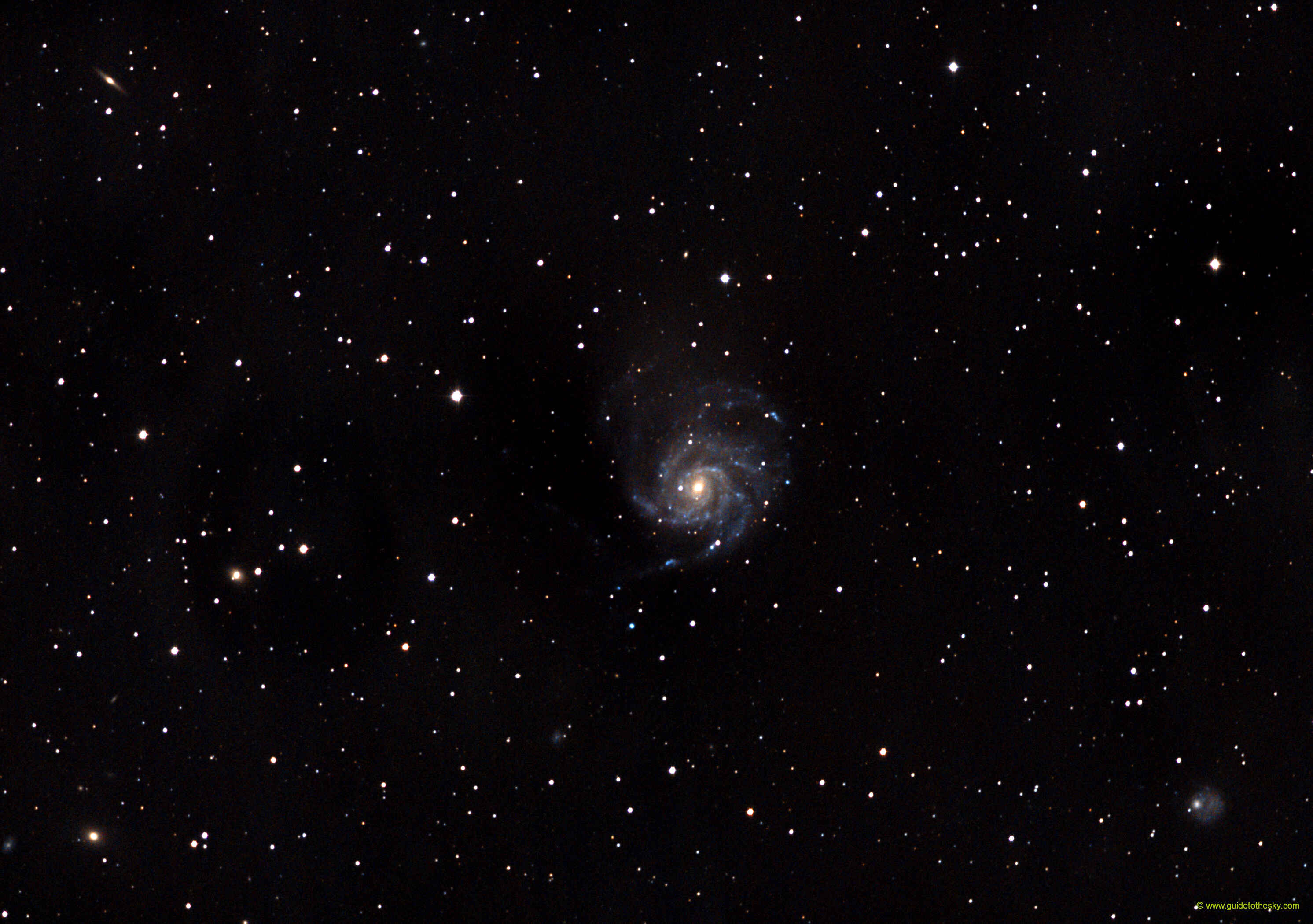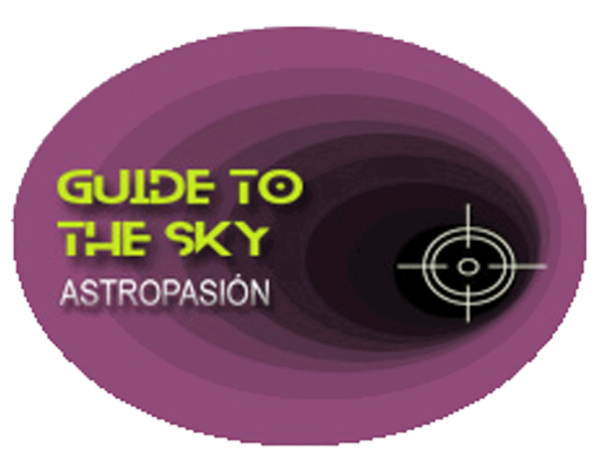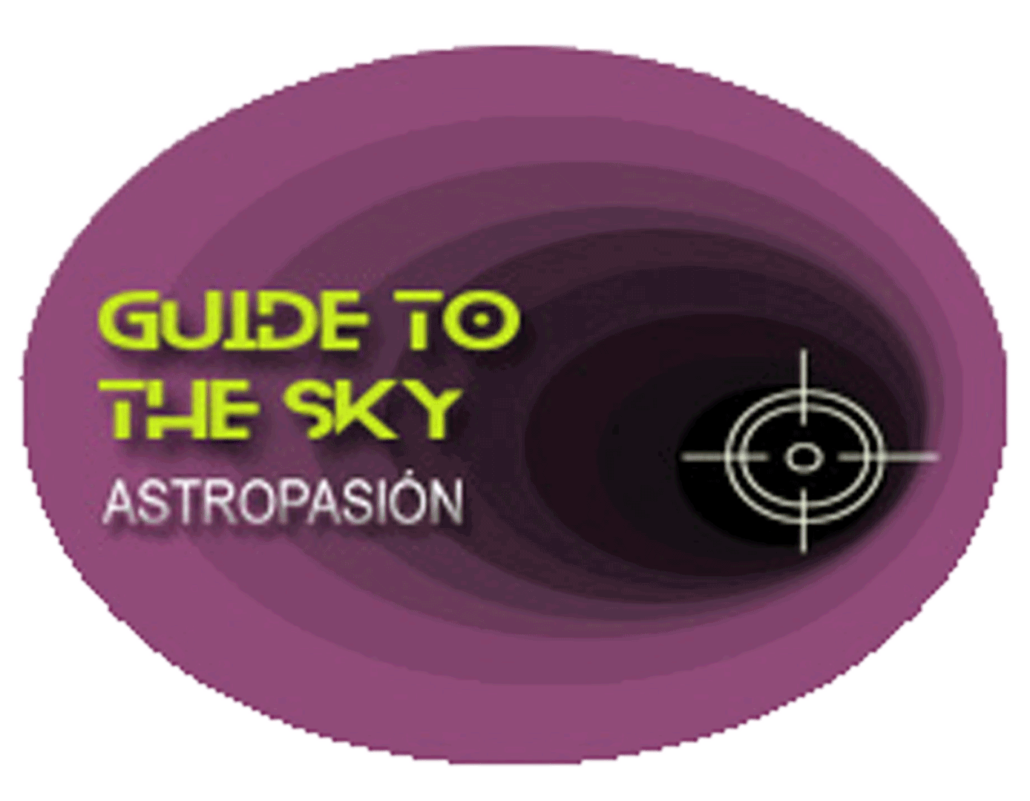Messier 101 - Ursa Major

En 2023 una supernova, la SN 2023ixf que llegó casi a alcanzar la 10ª Magnitud, fue descubierta en una de sus espiras, justo al lado de una región HII llamada NGC 5461.
M101 es una SAB(rs)cd, por tanto una espiral gigante situada a {{ object[0].M101.mesDistances[0].dist }} {{ object[0].M101.mesDistances[0].unit }} de distancia. Tiene una serie de galaxias acompañantes, entre ellas NGC5477, NGC 5474, NGC 5473, NGC 5485. Todas ellas, a similar distancia, forman parte de un pequeño grupo: el grupo de M101,
M101 - Galaxia del Remolino - en la IA
Messier 101 (M101), also known as the Pinwheel Galaxy, is a beautiful and famous spiral galaxy located in the constellation Ursa Major (the Great Bear). Here's a breakdown of its key features and information:
Key Facts and Characteristics:
- Type: Grand design spiral galaxy
- Distance: Approximately 21 million light-years from Earth
- Diameter: Roughly 170,000 light-years across, making it significantly larger than our Milky Way galaxy.
- Magnitude: Apparent magnitude of 7.9, which means it's a faint object best observed with binoculars or a telescope under dark skies.
- Designation: Also known as NGC 5457
- Discovery: Discovered by Pierre Méchain in 1781 and subsequently cataloged by Charles Messier.
- Location: Right Ascension: 14h 03m 12.6s, Declination: +54° 20' 57" (J2000.0)
Why it's interesting:
- Prominent Spiral Arms: M101 is renowned for its well-defined and symmetrical spiral arms. These arms are filled with bright, young stars, HII regions (areas of ionized hydrogen gas that glow due to the presence of hot, young stars), and dust lanes.
- High Star Formation Rate: The Pinwheel Galaxy has a higher rate of star formation compared to many other spiral galaxies. This activity is particularly concentrated in the spiral arms.
- Supernovae: M101 has been the host of several observed supernovae, including SN 2011fe (a Type Ia supernova) which was exceptionally bright and well-studied. The observation of supernovae in M101 helps astronomers understand stellar evolution and the distances to galaxies.
- Distorted Disk: Gravitational interactions with nearby galaxies may be responsible for some distortions observed in M101's disk.
Observing Tips:
- Dark Skies: M101 is a faint object, so it requires dark skies away from light pollution for good viewing.
- Binoculars or Telescope: While theoretically visible with the naked eye under exceptional conditions, binoculars or a telescope are necessary to see it properly. A larger telescope will reveal more detail in the spiral arms.
- Location: Use a star chart or a computerized telescope to locate Ursa Major and then pinpoint M101. It's located near the end of the handle of the Big Dipper asterism within Ursa Major.
- Low Magnification: Start with low magnification to find the galaxy, then gradually increase the magnification to observe the details in the arms.
Significance:
M101 is a valuable target for astronomical study, providing insights into spiral galaxy structure, star formation processes, and the distribution of matter in the universe. Its relatively close proximity and face-on orientation make it an excellent subject for detailed observations.
In summary, Messier 101 (The Pinwheel Galaxy) is a beautiful and important example of a grand design spiral galaxy, notable for its prominent spiral arms, high star formation rate, and its role as a host for supernovae. It's a challenging but rewarding object to observe for amateur astronomers.
Más información sobre Messier 101 en NASA/IPAC.
Mapa alrededor de Messier 101
Otros identificadores de M101:
"APG 26" ,"IRAS F14012+5434" ,"IRAS 14013+5435" ,"K73 610" ,"LEDA 50063" ,"M 101" ,"MCG+09-23-028" ,"NAME Pinwheel" ,"NGC 5457" ,"SPB 243" ,"TC 302" ,"UGC 8981" ,"VV 344a" ,"VV 456" ,"VV 344" ,"Z 272-21" ,"2MASX J14031258+5420555" ,"Z 1401.5+5435" ,"[CHM2007] HDC 853 J140312.58+5420555","[CHM2007] LDC 842 J140312.58+5420555","[M98c] 140126.6+543525" ,"UZC J140312.5+542056" ,"PSCz Q14013+5435" ,"SDSS J140312.52+542056.2" ,

